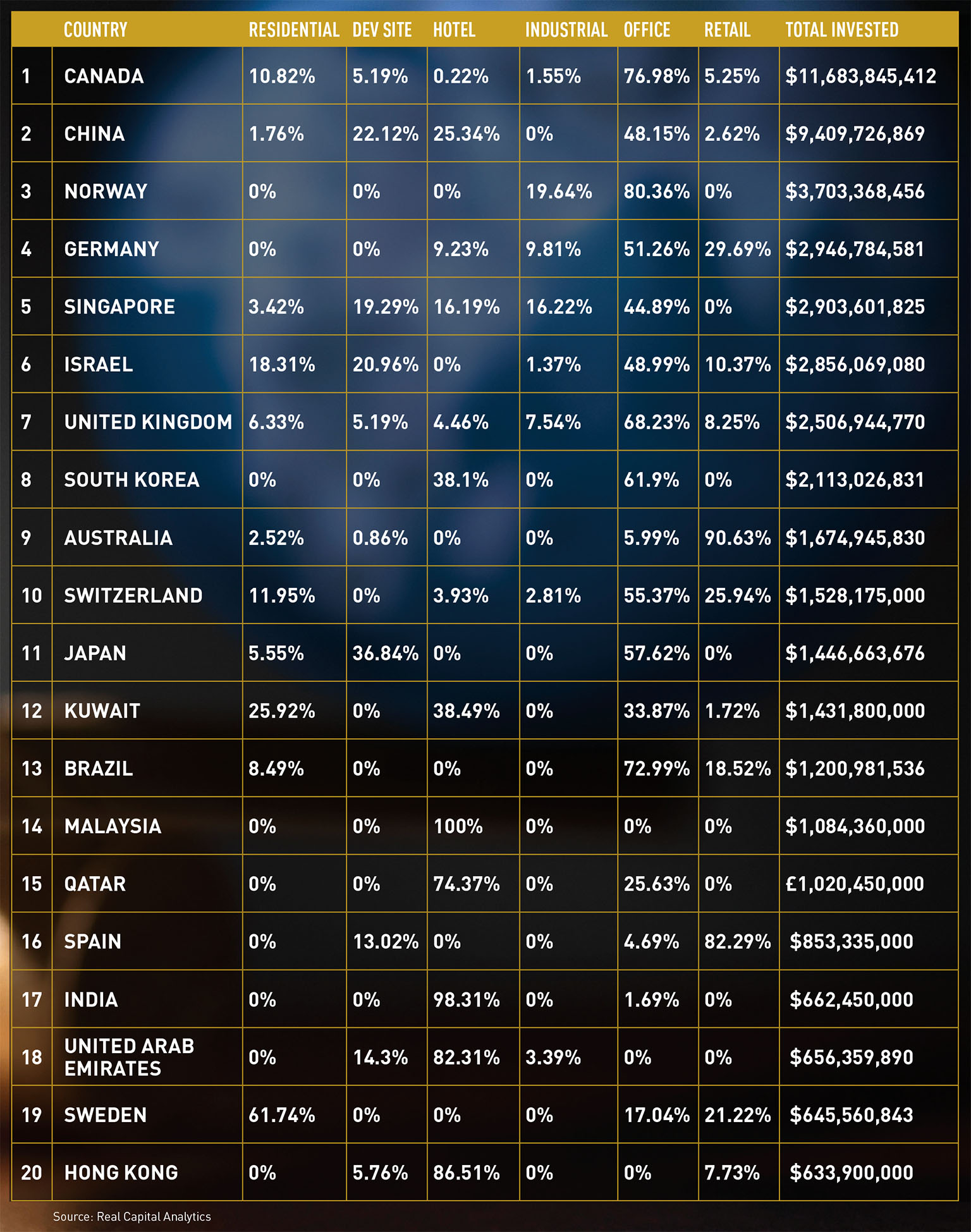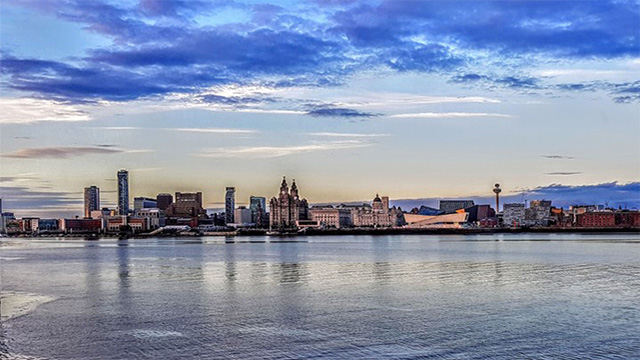 When looking to invest, it pays to know where the big spenders are splashing their cash, and for New York real estate, that means taking a global view.
When looking to invest, it pays to know where the big spenders are splashing their cash, and for New York real estate, that means taking a global view.
The table on the right, based on data from Real Capital Analytics, reveals where the lion’s share of the cash has been coming from during the past five years and which asset classes have been most heavily invested in.
A quick look the top 20 investors by country reveals that most are drawn to particular sectors – in some cases exclusively. But to what degree can these patterns can be used as a basis for future predictions, and how are investor habits evolving?
Neighbour with deep pockets
Canada is the biggest overseas investor into New York by far, investing $11.6bn over the past five years. “It has a similar culture, the same language and it is our neighbour,” says Jim Costello, senior vice president at Real Capital Analytics. “It makes sense that Canada is the biggest investor.”
And with more than three-quarters of the Canadian money going into offices they are one of the most active investors in this sector. The same is true among the Norwegians, which have invested more than 80% of their $3bn pot into offices.
This should come as little surprise, according to Savills’ head of US capital markets Borja Sierra, because while the Canadians are known for their higher risk tolerance when it comes to geographical location in New York, often venturing further out than some other foreign investors, they are more conservative when it comes to asset type.
“Investors with longer-standing experience in the American market – so the Canadians, Norwegians and, to an extent, the Germans – are much more comfortable investing into offices. While Asian and Middle Eastern investors are more prepared to take a slight premium on return and a larger risk by looking more at development sites and hotels,” he says.
Almost half of Chinese investment – China is the second biggest investor in New York by value – was split between these two sectors. The Malaysians have invested in nothing but hotels over the past five years, according to the research, and investment from India, the UAE and Hong Kong has been heavily weighted towards hotels, coming in at 98%, 82% and 86% respectively.
Future trends
Asked whether the big investors will stick to their traditional sectors, Costello warns that these patterns may be about to change.
“Chinese investors have traditionally been attracted to development sites – assets at higher prices. They are more opportunistic. But they are coming from a part of the world where it is all about development sites. Or at least it has been up until now. But we all know times are changing,” he says.
“The Chinese and other Asian investors might start to alter the way they navigate the property world based on the way the world is not the same anymore. In five to 10 years’ time, we may well see them investing in assets that we typically see attracting European investors now. The Norwegians, for example, are much more on the lookout for safe, stable yields. They are like ‘get me an office building and send me the rent cheque each month’. As times change, we might see the Asian investors behaving more like this.”












